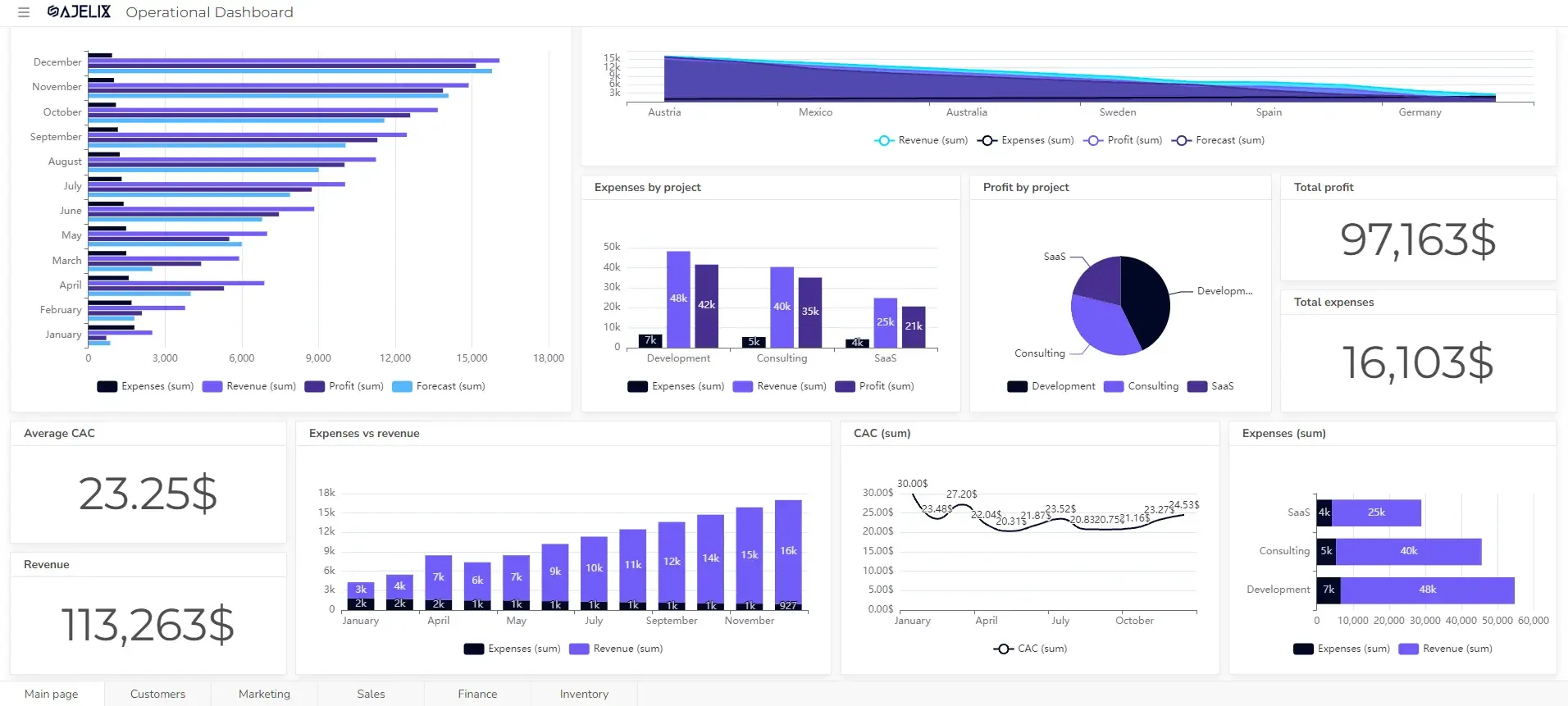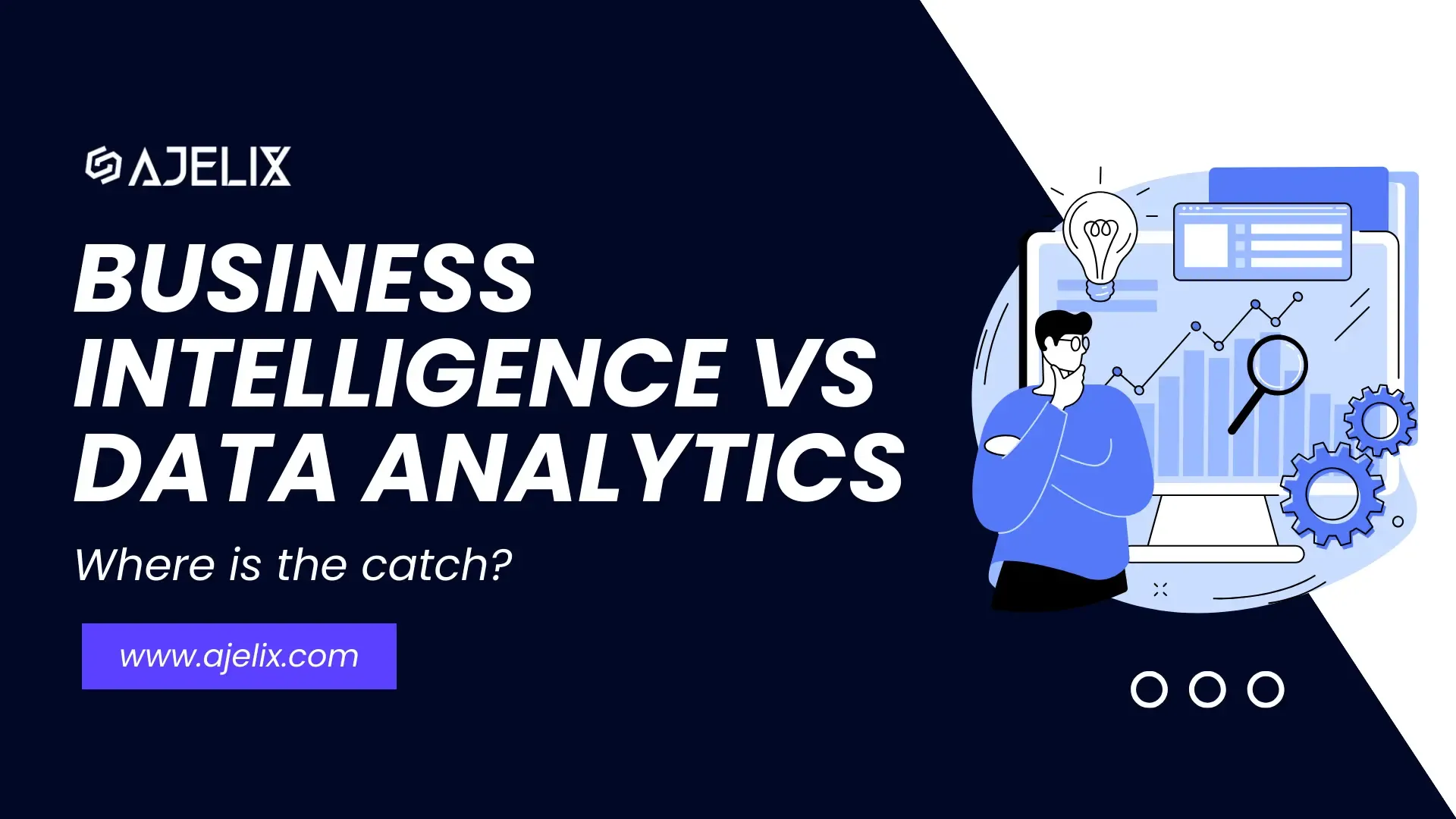- Home
- Data Visualization
- Tools
- AI Data Analyst
- Excel Formula Generator
- Excel Formula Explainer
- Google Apps Script Generator
- Excel VBA Script Explainer
- Excel VBA Script Generator
- Excel VBA Code Optimizer
- Excel VBA Code Debugger
- Google Sheets Formula Generator
- Google Apps Script Explainer
- Google Sheets Formula Explainer
- Google Apps Script Optimizer
- Google Apps Script Debugger
- Excel File Translator
- Excel Template Generator
- Excel Add-in
- Your Virtual AI Assistant For Excel Spreadsheets
- AI Answer Generator
- AI Math Solver
- AI Graph Generator
- AI SQL Generator
- Pricing
- Resources
- Author:
5 Best AI Data Analytics Tools Comparison 2025
- Last updated:December 12, 2025
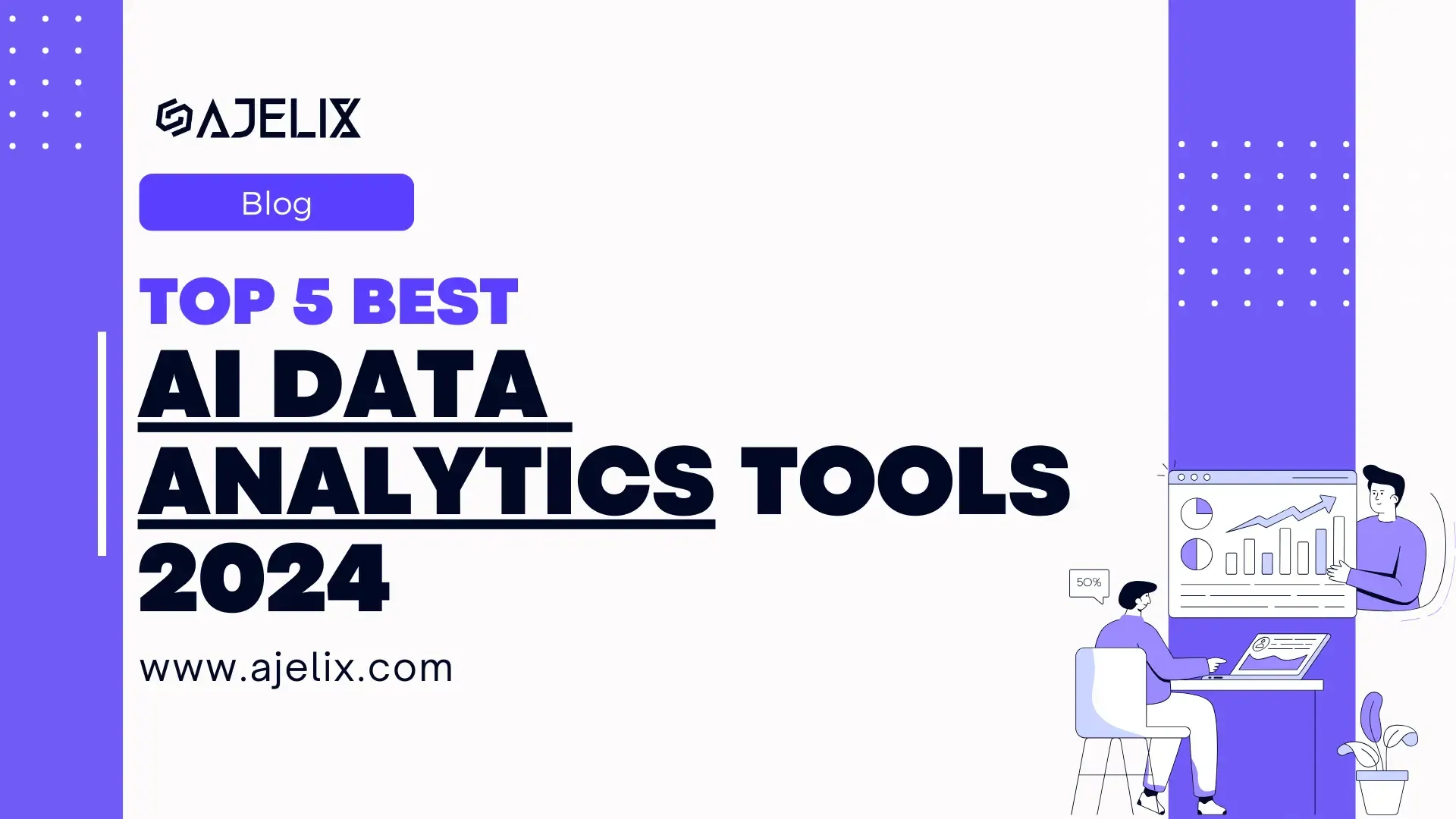
Explore other articles
- 7 Productivity Tools and AI Plugins for Excel
- Julius AI Alternatives: Top 5 Choices 2026
- No Code Analytics: Top Tools in 2026
- Automation Tools for Excel in 2026: Built-In & Third-Party
- 5 Healthcare Data Analytics Trends 2026
- Best Analytics Platform For Startups In 2026
- 15 Best AI Tools For Startups In 2026 We Tried
- 7 Best AI Tools for Excel Data Analysis (2026 Comparison)
- AI Data Intelligence For Workspace
- Conversational Analytics & AI
Create dashboards fast & easy
If you’re not using AI in your business, you’re falling behind—or so everyone says, and they’re partially right. If you’re not leveraging AI 🤖 for business operations, your competitors likely are, giving them a competitive advantage. One way to use AI is for business data analytics. Using AI data analytics tools can help you accelerate tasks, identify patterns, and uncover correlations.
The specific functionalities will depend on which AI data analytics tool you choose. This article will introduce different AI tools to help you compare and pick the best one for your needs.
What’s AI Data Analytics Tool?
An AI Data Analytics Tool is a software platform that uses artificial intelligence (AI) to automate and improve the process of data analysis. These tools can be used to collect, clean, analyze, and visualize data in order to identify trends, patterns, and insights.
For teams working heavily with PDFs, scans, and semi-structured business documents, evaluating document AI SDKs is an important step in building the right analytics stack.
Looking to create reporting system fast & painlessly?
Build dashboards and track KPIs in one place with Ajelix BI

How To Choose Data Analytics Tool For Your Organization?
To choose the best software consider what types of data you need to analyze, what’s your budget, IT capabilities and data governance requirements.
Time needed: 1 hour
How to pick the right AI data analytics software?
- Consider what types of data you need to analyze
If you work with a lot of structured data, such as sales figures or customer information, you may want to choose a tool that is specifically designed for that type of data.
- Understand your budget and time constrains
Data analytics tools can range in price from free to tens of thousands of dollars per year. So it’s crucial to decide how much you can afford to spend on a tool. And how fast you need it as some tools require complex setup.
- Review your IT capabilities
Some data analytics tools require a lot of technical expertise to install and configure. If you have limited IT resources, you may want to choose a tool that is easier to deploy and manage.
- Make sure about data governance requirements
If you have strict data governance requirements, you need to choose a tool that supports your processes.
- What are the reporting and collaboration needs?
Review your needs and understand the most important features this tool should have. That will help you decide which tool does or doesn’t work for you.
List Of AI Data Analytics Tools
Discover the best data analytics tools that offer AI functionality to their users:
Let’s get to the feature comparison for each tool.
1. Ajelix BI: Best For Small Businesses & Non-Technical Teams
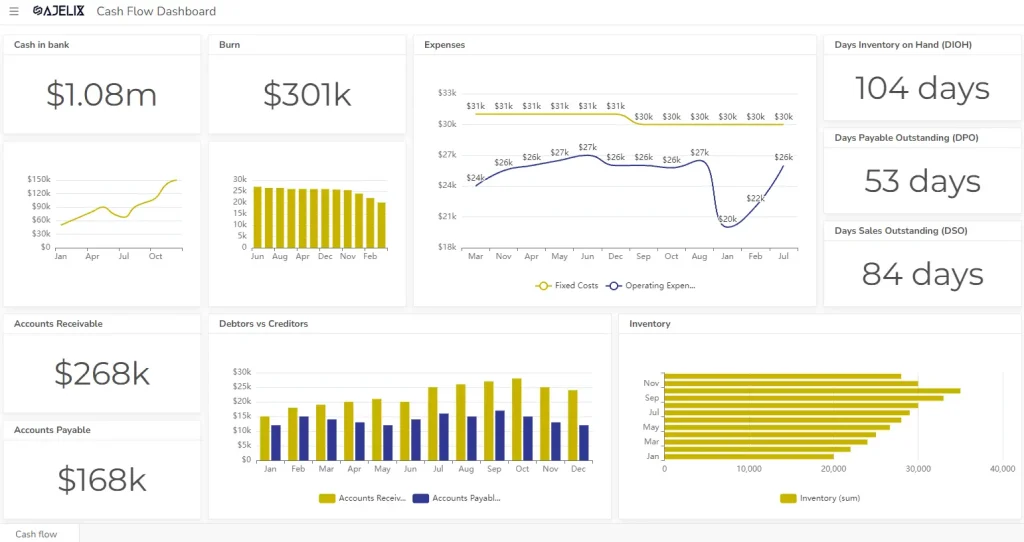
AI Features
- AI data analyzer
- AI chart builder from prompts
- One-click reports and premade charts & KPIs from your data
- AI assistant
| Feature | Overview |
|---|---|
| Features | Live data refreshing, drag and drop interface, easy to use, sharing, data modeling, KPI creation, calculations, SQL integrations, quick actions, such as AI dashboard generator, conversational analytics, insights, easy set-up, created for non-technical teams, great data visualization capabilities, eased sharing settings |
| AI Features | Dashboard generator, pre-made AI charts & insights, AI chat, chat generator |
| Pros | Ease of use, powerful data visualization capabilities, great for non-technical teams, no-complex setups or trainings required, cost-effective, offers freemium plan |
| Pricing | From $40 |
| Additional | When subscribing get access to more than 20+ AI tools, such as excel formula generator. |
Ready to give it a go?
Connect your data and create professional reports
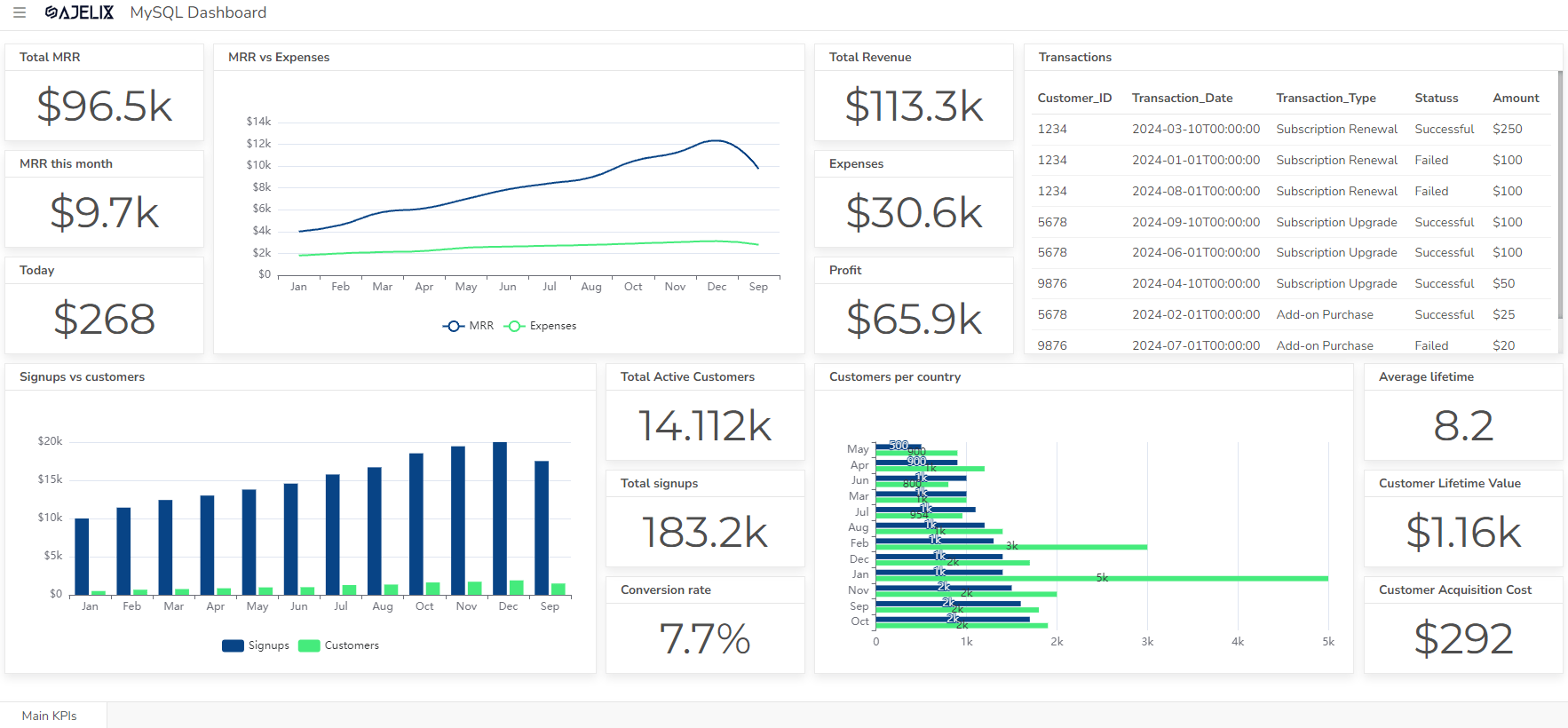
Start free
Try free and upgrade whenever
2. Polymer: Best For Self-service
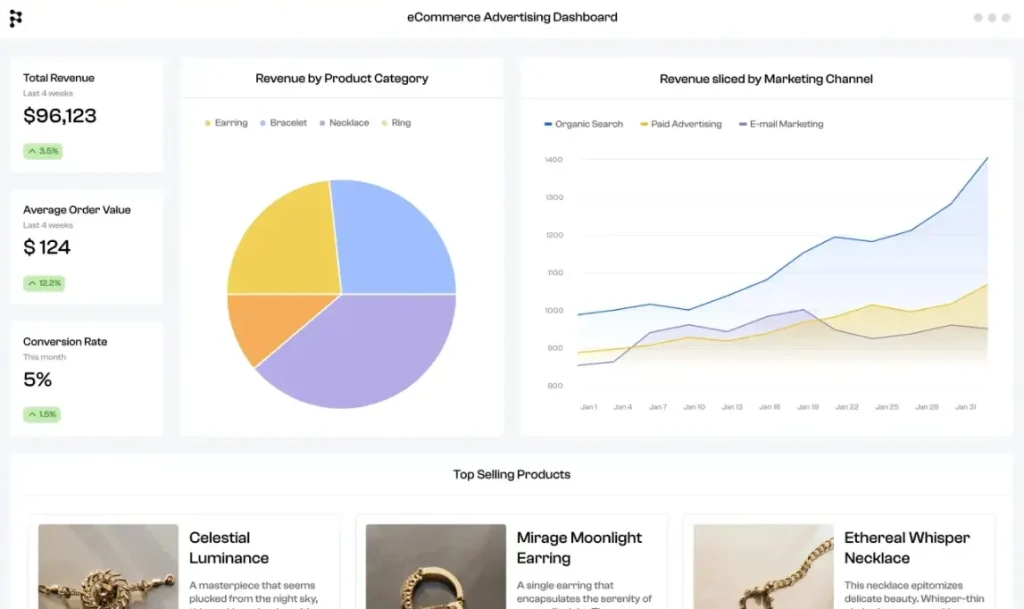
Polymer is quite new business intelligence platform, they focus on self-service analytics and ease of use. They offer many integrations and data sources as well as AI functionality.
AI Features
- AI generated dashboard
- AI powered chat for data analytics
| Feature | Overview |
|---|---|
| Features | Embedded analytics, AI features, Cost-effective, Integrates with other tools, Live data refreshing, Templates |
| AI Features | Generated dashboards, AI powered chats with insights |
| Pros | Easy to use interface, Created for non-technical users, Integrates with a wide range of other business intelligence tools, Affordable pricing |
| Cons | Relatively limited data analysis capabilities, Limited functionality, Can experience speed issues with large data |
| Pricing | Free trial, starting from 20$-500$ per month |
Related Article: Tableau Pros And Cons To Pick The Right Software
3. Tableau: Best For Advanced Analysts
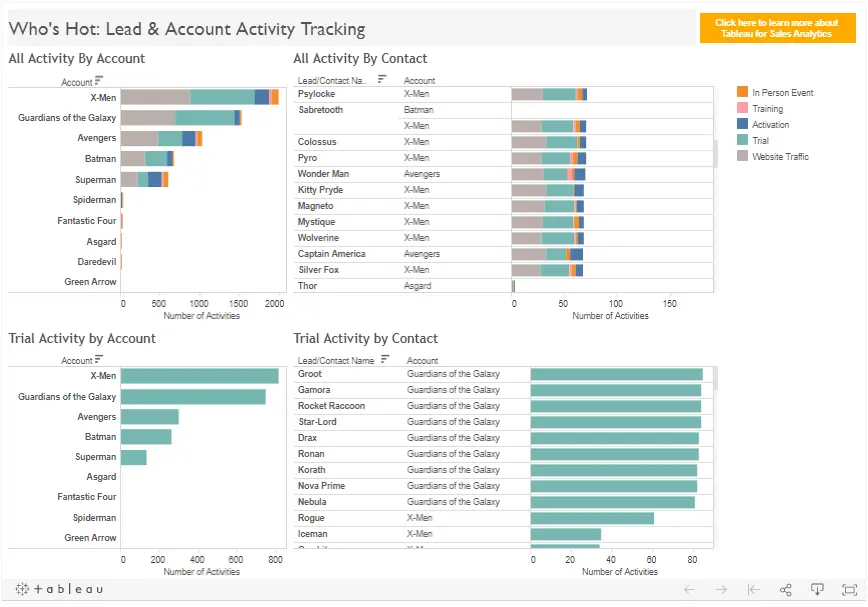
Tableau is one of the most popular data visualization platforms out in the market. Looking for advanced data analytics capabilities as it requires IT and analytics knowledge to setup the dashboards. This may not be the ideal tool for small businesses.
AI Features
- Advanced AI analytics capabilities using their machine learning module Einstein.
- AI powered data cleaning and preparation tasks.
- Tableau can detect anomalies in data, which can be helpful for identifying potential problems or opportunities.
- AI powered chat for analytics
- AI analyzer and data explainer
| Features | Overview |
|---|---|
| Features | AI-powered data analytics, interactive dashboards, drag-and-drop interface, data visualization, embedded analytics, data preparation, data storage flexibility, mobile version, scalability for large datasets, embedded analytics |
| AI features | AutoML, Explainable AI, Natural language processing, Anomaly detection, Predictive modeling |
| Pros | Easy to use interface, Powerful data cleaning and preparation tools, Wide range of data visualization options, Ability to predict future outcomes, Integrates with a wide range of other business intelligence tools, Affordable pricing |
| Cons | Relatively limited customization capabilities, Complex setup, Not as easy to use as some other tools, requires SQL and data science knowledge to build the dashboards, steep-learning curve, Can be expensive |
| Pricing | From 15$ per viewer to 75$ per creator licensing |
| Capabilities | Handles a wide variety of data types, including structured, semi-structured, and unstructured data, Performs a variety of data analysis tasks, including data cleaning, preparation, visualization, prediction, and natural language processing |
Related Article: Top 10 Best Business Intelligence Tools Comparison
4. Looker: Best For Google Products & Enterprises
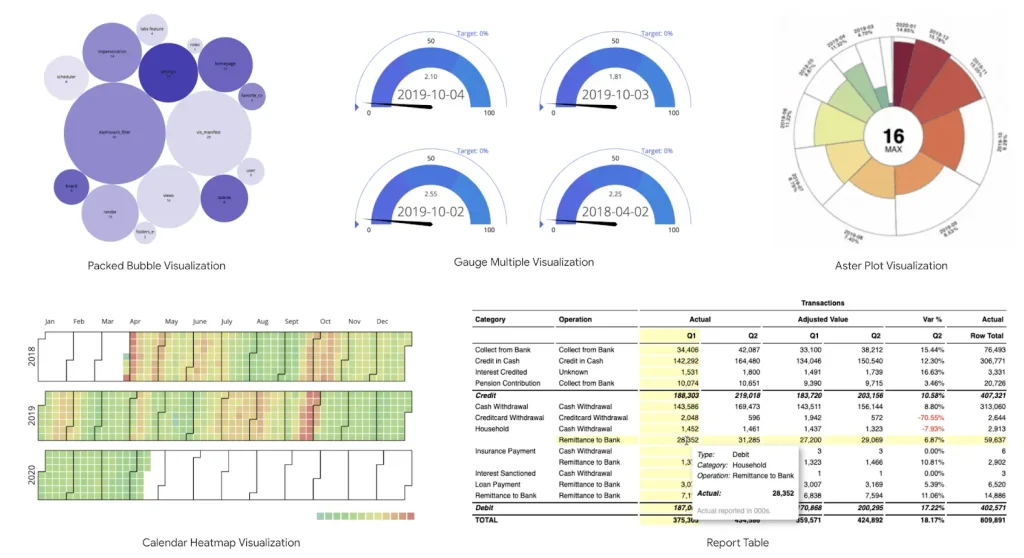
Looker or Google data studio is another tool that is great alternative for enterprise companies in need for big data analytics and advanced AI modules. However, not an ideal solution for non-tech teams. Because the report setup requires SQL knowledge and architecture.
AI Features
- AI chat analyzer
- Dashboard generation with prompts
- Formula generation
- Automatic summaries and presentation creation with Google slides
| Feature | Overview |
|---|---|
| Features | Self-service data exploration and analysis, data visualization, enterprise data governance, data exploration and analysis through a web interface, centralized data access and control, integration with cloud data sources like Amazon Redshift, Google BigQuery, and Snowflake. |
| AI Features | Natural Language Processing (NLP), AutoML, Machine Learning, Predictive Modeling, Anomaly Detection |
| Pros | Wide range of data visualization options, Powerful AI capabilities, Integrates with a wide range of other business intelligence tools, Scalable for large datasets, Mobile version |
| Cons | Steep learning curve, Can be expensive, Requires advanced SQL and technical knowledge, May not be as easy to use as some other data analytics tools, Not user-friendly, |
| Pricing | Freemium plan. licensing plans and package pricing plan. Starts from 5000$ per month. |
| Capabilities | Handles a wide variety of data types, including structured, semi-structured, and unstructured data, Performs a variety of data analysis tasks, including data cleaning, preparation, visualization, prediction, and natural language processing |
Related Article: 8 Best Business Intelligence (BI) Tools For Small Businesses
5. Microsoft Power BI: Best For Big Companies
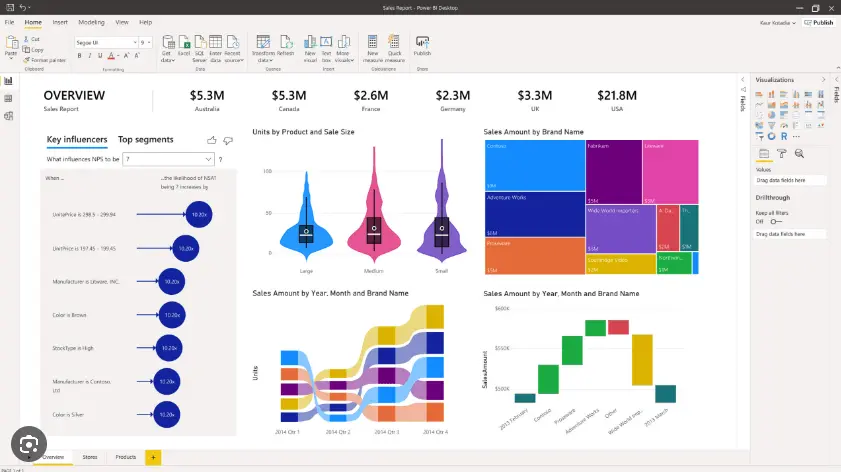
Of course, we couldn’t exclude Power BI from this list, as this is the most used BI tool in the market. It’s a great tool for companies with big data and analytics team. However, it can be a daunting task to create a dashboard with any IT and DAX function knowledge.
AI Features
- AI that automatically analyze and visualize data
- AI chat, write your question and get the answer
- Anomaly detection
- Sentiment analysis
- Forecasting with AI
| Feature | Overview |
|---|---|
| Feature | Variety of data connections, advanced analytics capabilities using DAX functions, data transformations using PowerQuery, scheduled data refresh, integration into MS ecosystem |
| AI features | Forecasting with AI, Sentiment Analysis, Decomposition Tree, Key Influencers, Anomaly Detection, Natural Language Query |
| Pros | Advanced platform for complex analytics, many AI functions that are unique, great for big data, can connect to many data sources, cost-effective |
| Cons | Steep learning curve, advanced knowledge in DAX function creation is necessary, missing responsiveness, limited Mac usability, dependency on MS system, |
| Pricing | Starts as low as 10$-8995$ |
Related Article: 7 Best Self-Service Business Intelligence (BI) Tools
Other Alternatives
There are many tools out there, that provide different AI functionality for data analytics processes. Here’s few of them:
- Sisense: provides some AI functionality, however, if you want to use it you must book a demo and develop the system.
- Amplitude: provides chat, data assistant, anomaly detection, predictions and recommendations.
- Qlik Sense:advanced analytics and automated machine learning.
- Zoho Analytics: AI chat, AI driven insights, smart interpretation, predictive analytics, and more.
Summary
Using AI for business data analytics can help speed up tasks, identify patterns, and uncover correlations. AI data analytics tools use artificial intelligence to automate and improve the process of data analysis.
To choose the best software, consider what types of data you need to analyze, your budget, IT capabilities, and data governance requirements.
Ajelix BI, Polymer, Tableau, Looker, and Power BI are some of the AI tools available. They offer various features such as live data refreshing, easy-to-use interfaces, and powerful data visualization capabilities.
It’s crucial to decide how much you can afford to spend on a tool and how fast you need it as some tools require complex setup.
Moreover, while selecting the right AI data analytics tool is pivotal for harnessing data-driven insights, organizations seeking bespoke solutions can hire data analytics consultants through Toptal to ensure their analytics strategies are precisely aligned with their business objectives.
FAQs
These tools are best choices for AI functionality: Ajelix BI, Polymer, Tableau, Power BI, Looker
AI data analytics tools are software applications that help you analyze data and get insights to help you make data driven decisions using AI. These tools use AI to help you cleanse data, analyze, get insights, predictions, and create visualizations.
Ready to test Ajelix AI data analytics features?
From data to report in one minute or less with Ajelix BI
